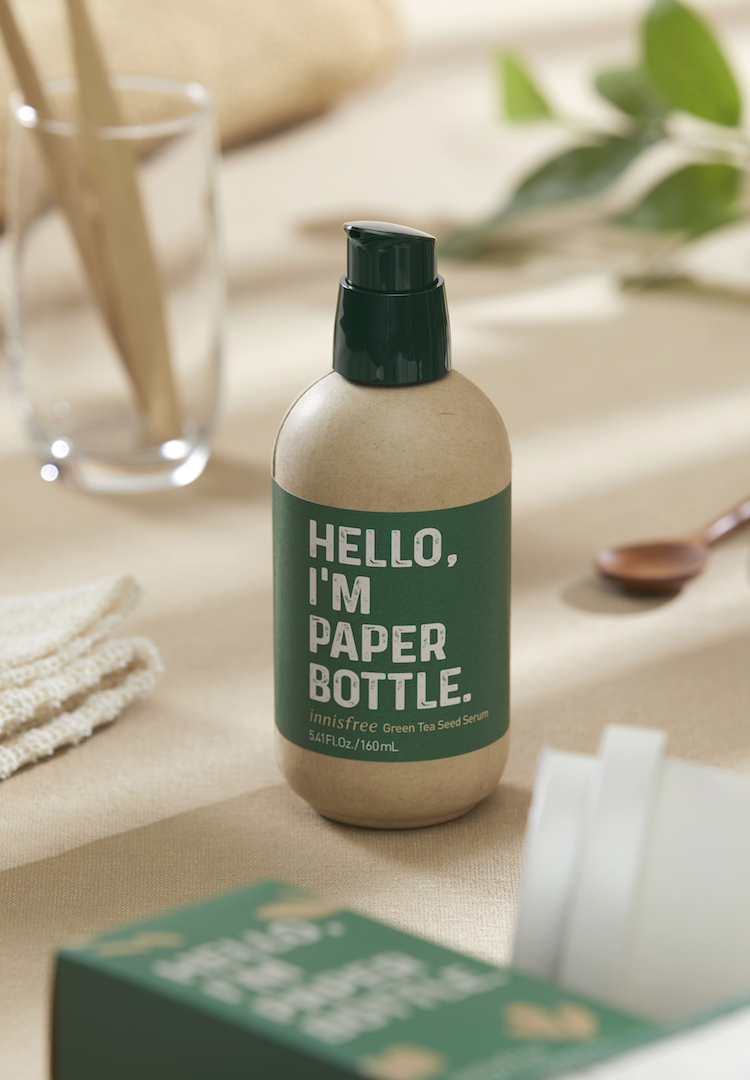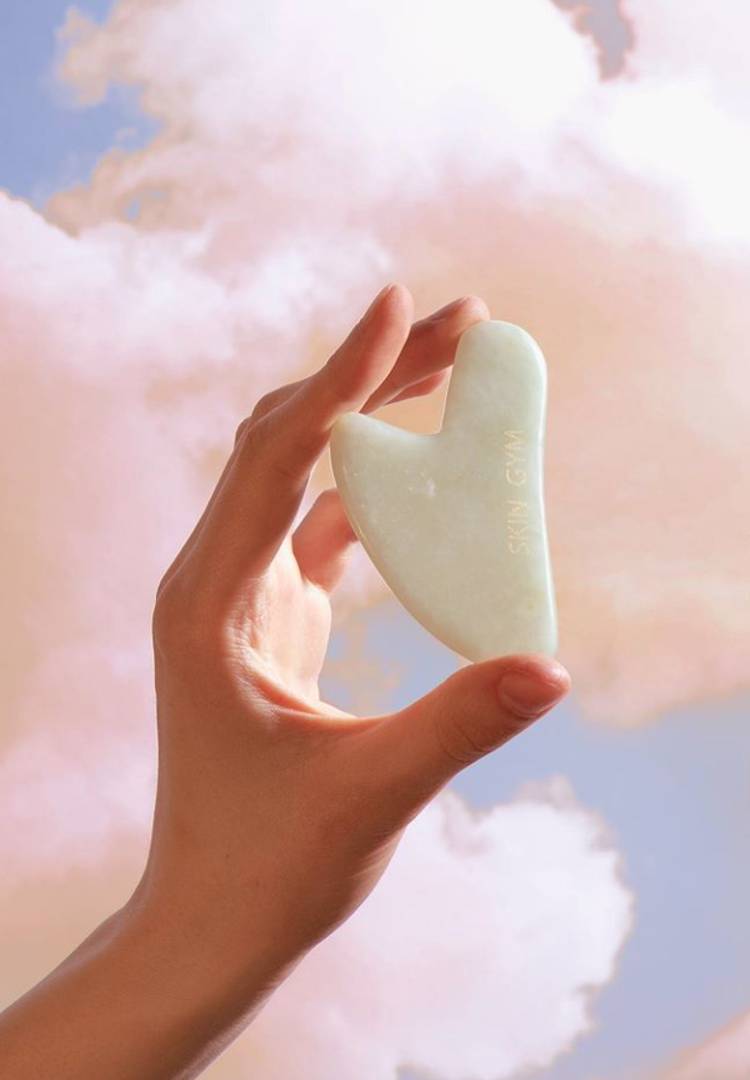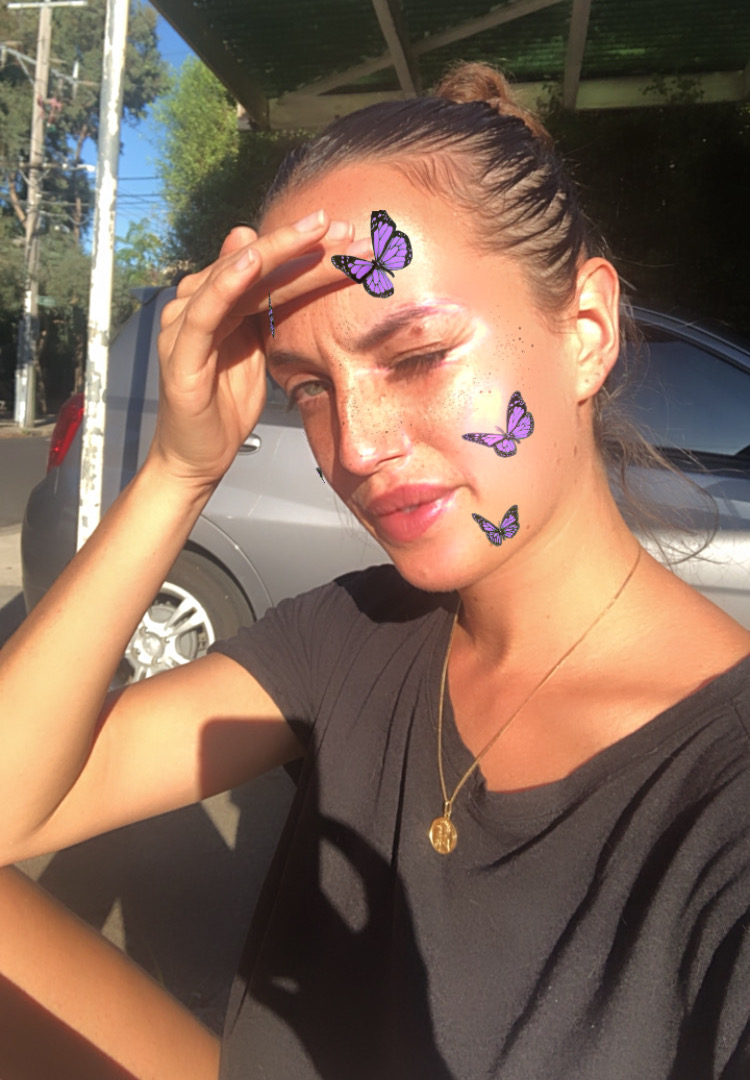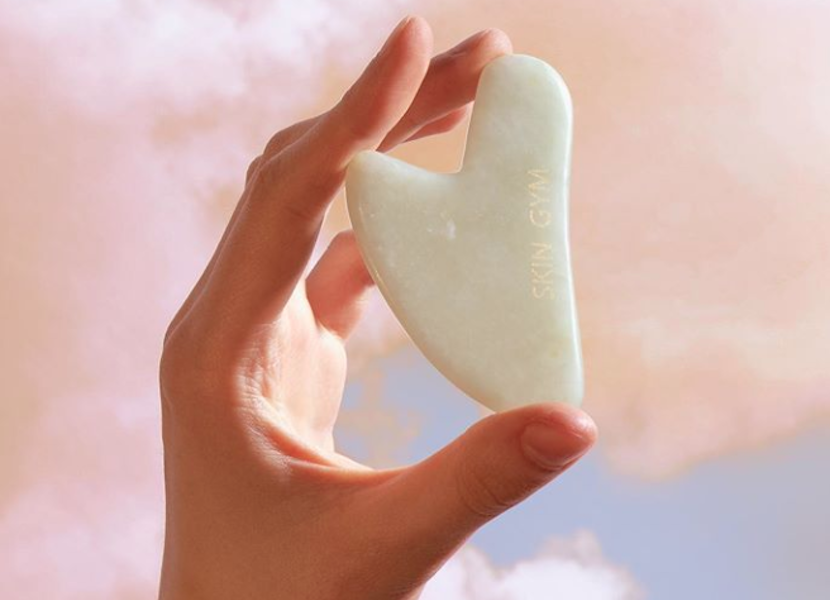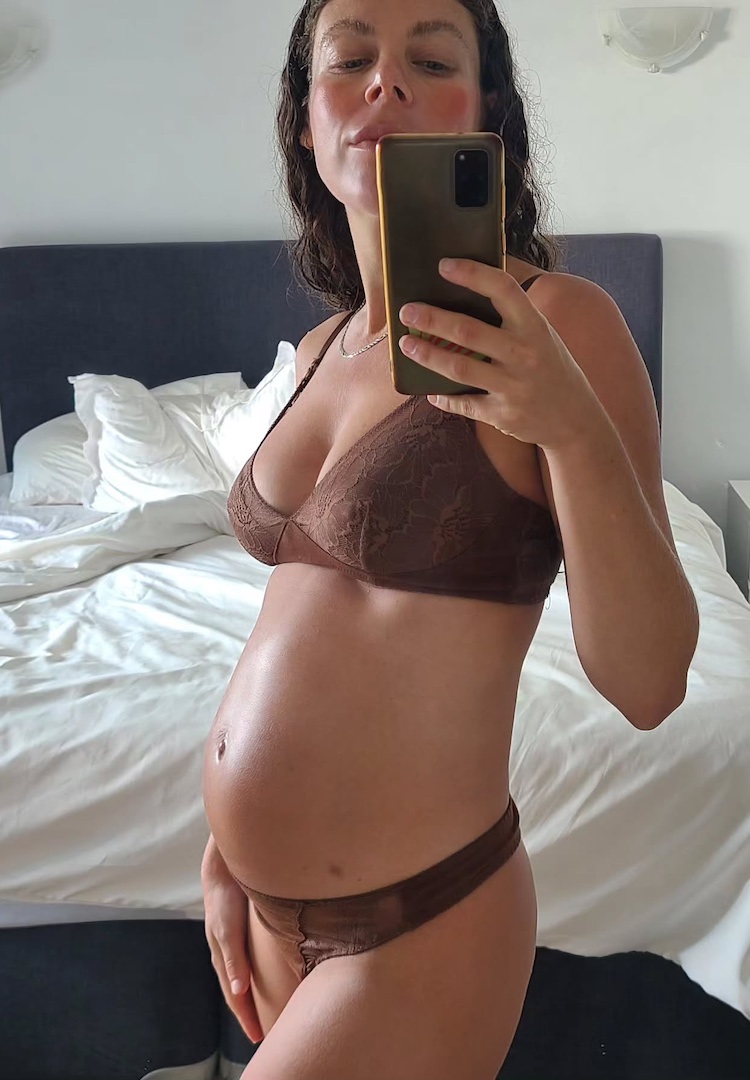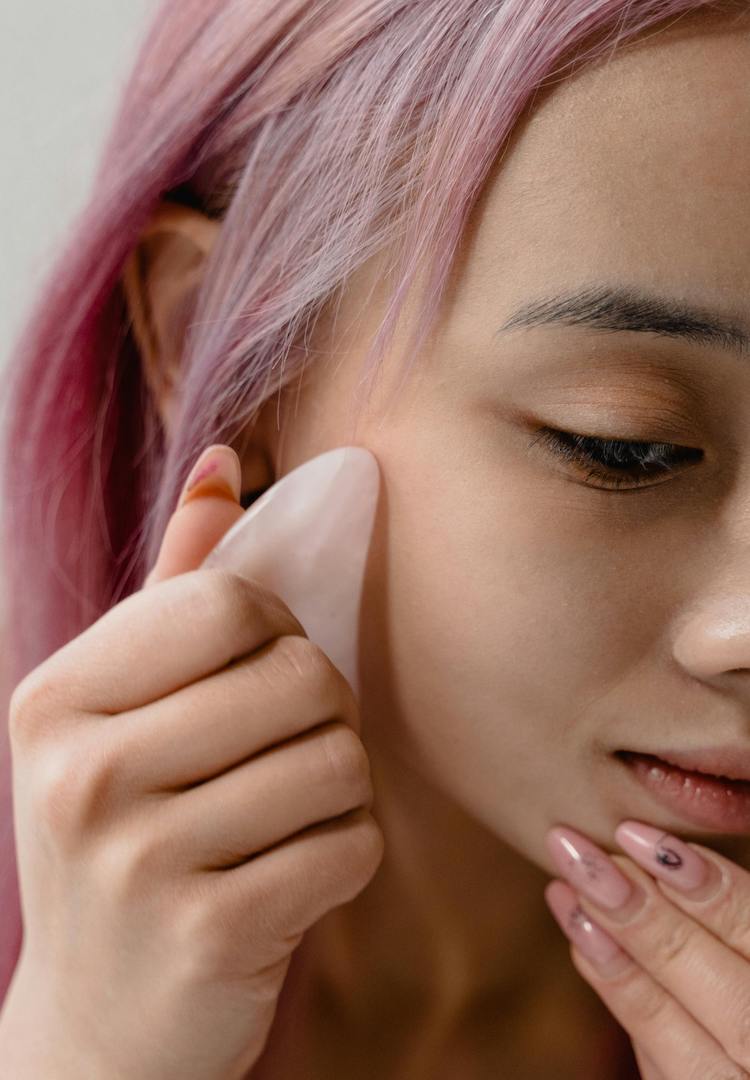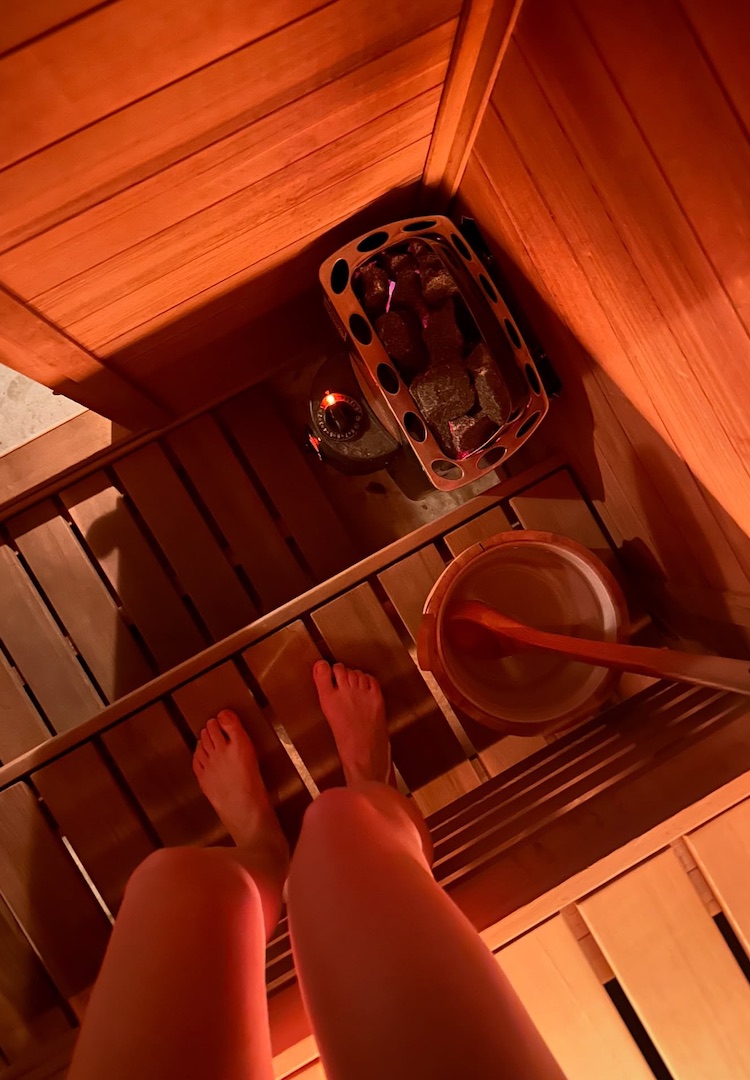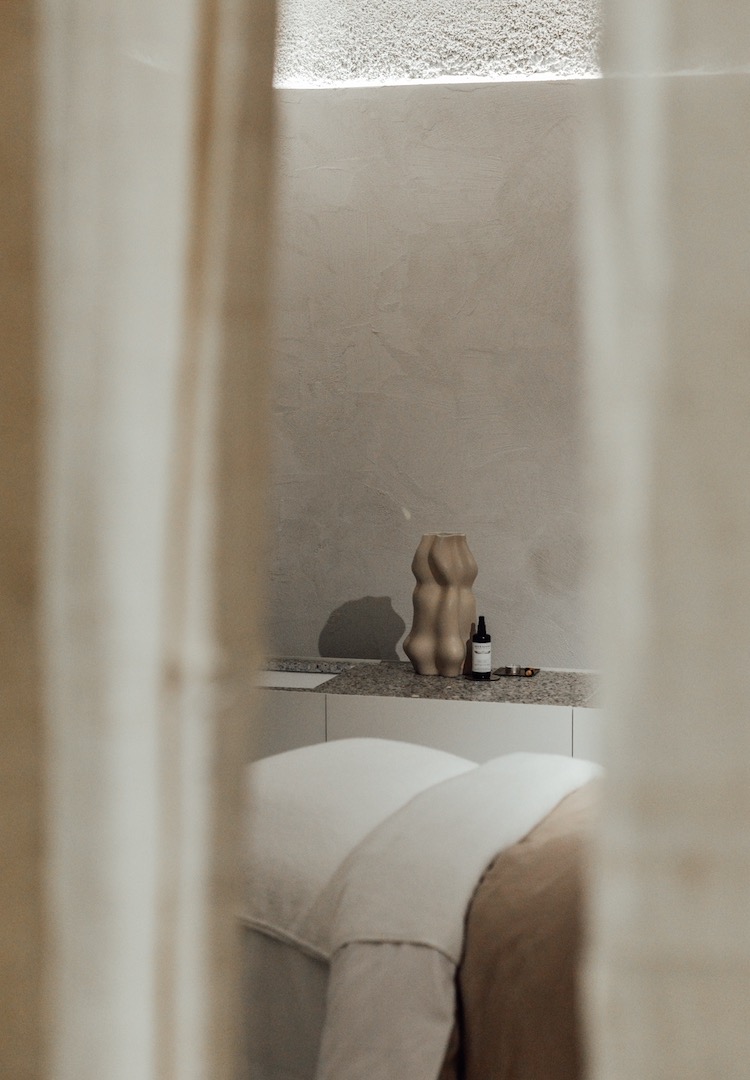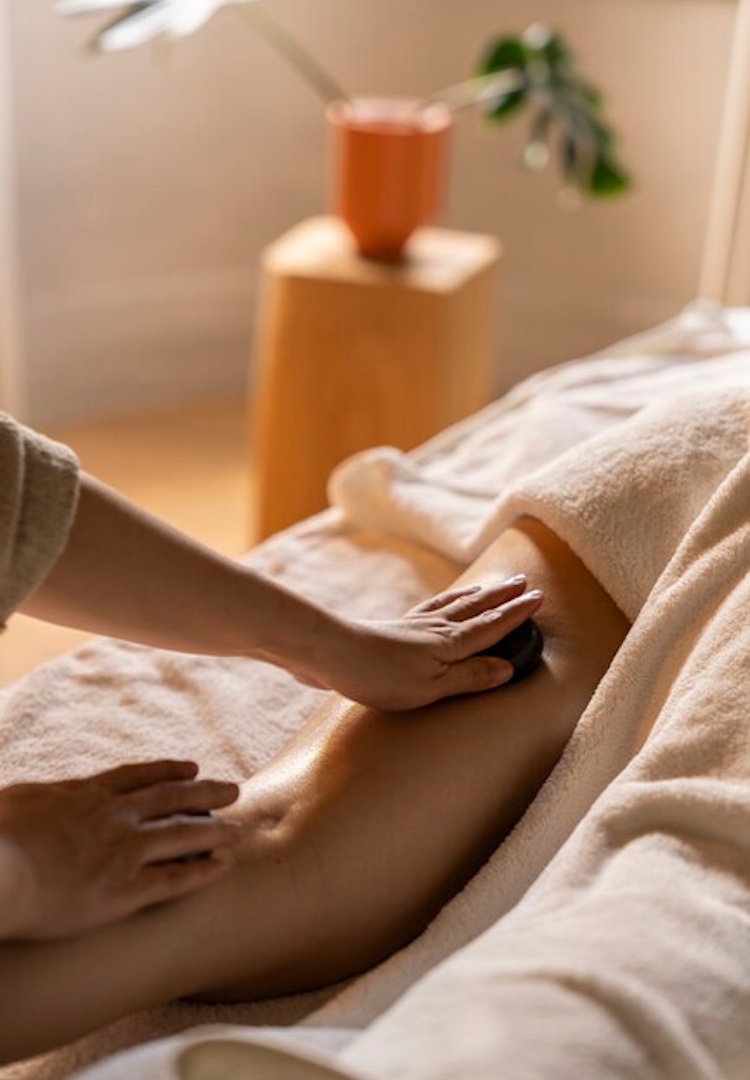I impulse bought a gua sha tool during lockdown to see if I would “truly transform”
IMAGE VIA @ANYWELL.SHOP/INSTAGRAM
WORDS BY CHRISTINA KARRAS
Does rubbing a stone on your face really work?
When lockdown first began in Melbourne back in March, I decided to fight the overwhelming wave of anxiety with some good old retail therapy. After seeing a sponsored post for a jade gua sha tool pop up on my Instagram, I jumped at the suggestion.
By definition, it was an impulse purchase, but I’d be lying if I said I hadn’t thought about buying one before. I had been an avid face-roller, obsessed with the cool touch of my cheap rose quartz one, using it any chance I’d get to roll in serums or over a sheet mask, so jumping on board the gua sha massage train was a logical graduation. I had always found using it to be quite soothing – gua sha promised me the same effects, and then some.
Eager to learn more I welcomed this “sign” from the universe (and clever AI marketing). Not one to shy away from the woo-woo world of self-care and looking for a better solution to my lockdown-related stress than online shopping, I was sold.
Wait, what is gua sha?
Gua sha is an ancient Chinese medical practice used to promote energy flow and blood circulation. The traditional technique can be quite vigorous, using a hard tool to scrape the skin until aggressive-looking red marks and bruises appear, with claims to detoxify the skin, heal illnesses and relieve heat stroke or chronic pain.
But for the face, a much gentler, more aesthetic version of facial gua sha has found itself a place in the modern, post-Goop wellness cycle of beauty. It’s a similar practice at its core, often using a jade tool to massage your face. It too boasts it’s own range of results from sculpting your face, reducing congestion, to smoothing wrinkles and brightening the skin – the list goes on.
How do you do it?
As a novice, I opted for a cheaper jade gua sha tool before jumping in the deep end where they can cost upwards of $60. Armed with my new purchase, I set out to learn from a professional and found Sandra Lanshin Chiu, an acupuncturist and herbalist who specializes in treating and rejuvenating skin using traditional Chinese Medicine techniques.
This video from her skin studio in New York offered a great how-to, and provided me with some semblance of technique which made me feel like I wasn’t just foolishly rubbing a rock all over my face.
A key piece of advice from Sandra was to make sure you don’t use the sharp edge against your skin, instead holding your tool on a flat angle close to the skin.
“We want to use a light to medium pressure,” she says in the video. So in other words, there’s no need to beat your skin into submission like the OG gua sha.
The practise itself is fairly simple. Her directions tell you to prep your face and neck with a hydrating mist, before applying around face oil to your damp skin. Then using your tool, start to release the muscles around your neck.
“Whatever is happening in our face is happening in our neck,” Sandra says before guiding you to scrape the back of your neck and décolletage. As someone who experiences a lot of neck tension and migraines, I really enjoyed this opportunity to massage out some of those aches.
Moving on to the face, you continue to work upwards and outwards beginning with your chin, taking time to “wiggle” the tool to massage your jaw. Sandra suggests repeating each motion five times or more before moving on, following the lines of your cheekbones, under eye, brow bone, and forehead with varying amounts of pressure.
Cut to the chase, does rubbing a stone on your face really work?
In the video, Sandra says practising facial gua sha “can truly transform the way you look and feel,” before showing us the visible effects of it on one side of her face.
And I’d bet some sceptics could be convinced just by looking at her – 43 at the time of filming, she looks pretty damn good, with comments exclaiming she looked closer to mid-20s. “43? I’m running to her spa,” one wrote.
After practising gua sha on myself for the past few months, I haven’t quite achieved the natural face-lift that some practitioners promote, but I have noticed my skin is considerably less puffy, more hydrated and in turn a little brighter.
The jury is still out on whether my $14 jade tool can truly balance my inner energies, or if it’s even real jade at all. But one of the things that struck a chord with me from Sandra’s tutorial was her instruction for the movements of gua sha to be “slow and mindful”.
While my vanity will gladly buy into any superficial promises like smoother, more glowing skin, I’ve come to love the idea of gua sha as a form of mindfulness and meditation.
Like many of us I’ve been feeling overwhelmed of late, seeking out activities that can quiet this sense of worry. Taking the time to concentrate on the fluid, repetitive movements of gua sha (while also giving myself a massage) was undeniably relaxing and grounding, which is more than good enough for me.

